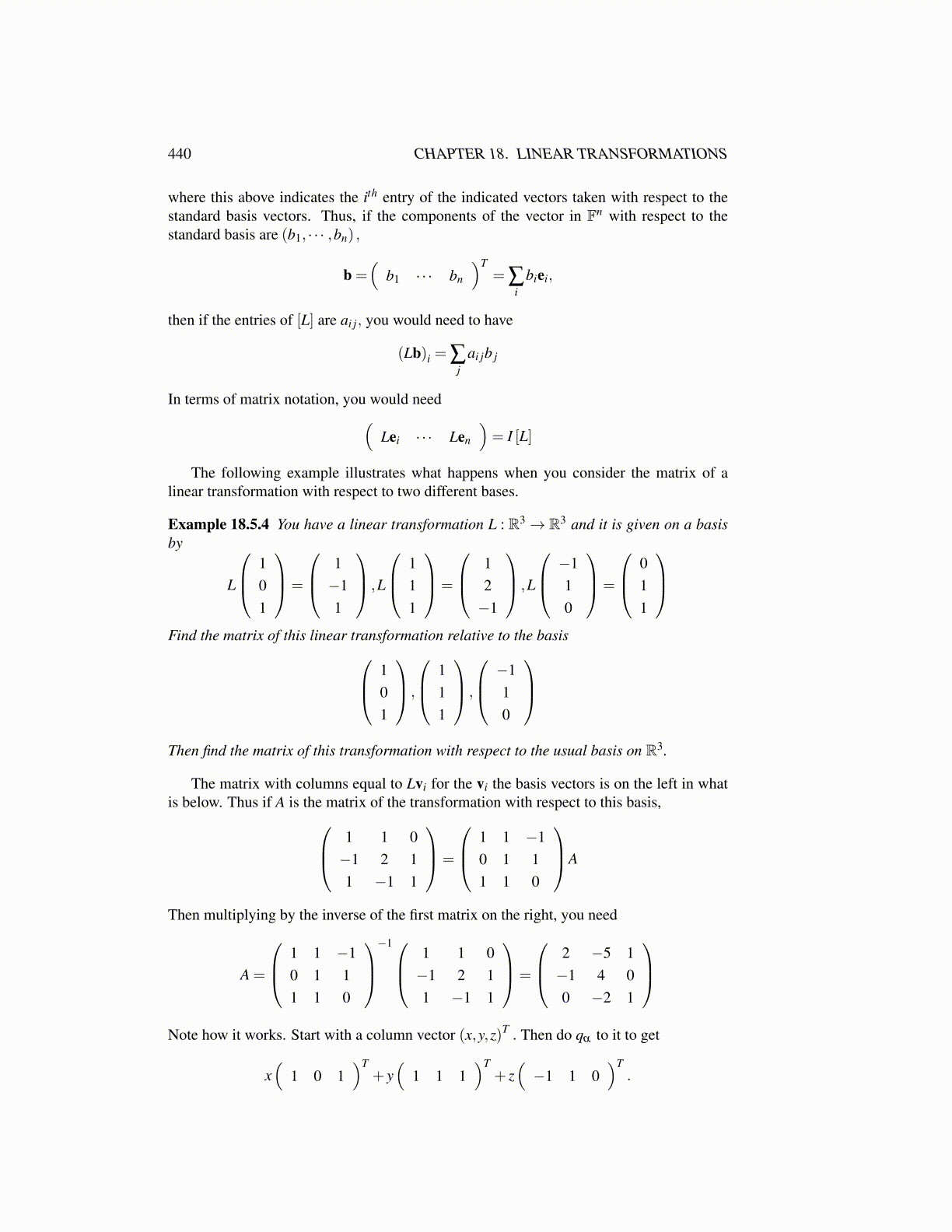
440 CHAPTER 18. LINEAR TRANSFORMATIONS
where this above indicates the ith entry of the indicated vectors taken with respect to thestandard basis vectors. Thus, if the components of the vector in Fn with respect to thestandard basis are (b1, · · · ,bn) ,
b =(
b1 · · · bn
)T= ∑
ibiei,
then if the entries of [L] are ai j, you would need to have
(Lb)i = ∑j
ai jb j
In terms of matrix notation, you would need(Lei · · · Len
)= I [L]
The following example illustrates what happens when you consider the matrix of alinear transformation with respect to two different bases.
Example 18.5.4 You have a linear transformation L : R3→ R3 and it is given on a basisby
L
101
=
1−11
,L
111
=
12−1
,L
−110
=
011
Find the matrix of this linear transformation relative to the basis 1
01
,
111
,
−110
Then find the matrix of this transformation with respect to the usual basis on R3.
The matrix with columns equal to Lvi for the vi the basis vectors is on the left in whatis below. Thus if A is the matrix of the transformation with respect to this basis, 1 1 0
−1 2 11 −1 1
=
1 1 −10 1 11 1 0
A
Then multiplying by the inverse of the first matrix on the right, you need
A =
1 1 −10 1 11 1 0
−1 1 1 0
−1 2 11 −1 1
=
2 −5 1−1 4 00 −2 1
Note how it works. Start with a column vector (x,y,z)T . Then do qα to it to get
x(
1 0 1)T
+ y(
1 1 1)T
+ z(−1 1 0
)T.